Microsoft turns 50: 4 employees recall their early years
Published in Business News
Fifty years ago, two kids from Seattle flipped the tech industry on its head.
While all the big brains in personal computing were focused on machines — "microcomputer" hardware — Bill Gates and Paul Allen were thinking about the technology that made the machines go: software. That idea, planted by Allen at Gates' Boston-area apartment, became the opening verse of Microsoft's epic.
Gates and Allen launched "Micro-Soft" on April 4, 1975, out of a small office in a strip mall in Albuquerque, N.M., then decamped for Bellevue before landing in Redmond. Over the decades that followed, amid leadership changes, intense government scrutiny and billions upon billions of dollars in revenue, tens of thousands of employees passed through Microsoft to witness, and add to, the stuff of tech-industry legend.
Microsoft built things. It broke things. It created opportunities for people who never thought they'd work in the tech industry. It gave some a lucrative retirement early in their lives, and their own stories to tell.
"Bringing home the bacon"
Scott Oki joined Microsoft as employee no. 121. The company was small; Gates was hands-on, and hard to please.
"One of his favorite phrases was 'that's the stupidest thing I've ever heard,'" Oki says. "He didn't use that on me, so I feel pretty good about that."
Another, kinder phrase that pops to Oki's mind when discussing the international division he founded at Microsoft is "bringing home the bacon." An obsession with rapid revenue growth permeated Microsoft in those early days.
Oki was about three weeks into the job as marketing manager when he presented a global expansion plan to Gates.
"Had I done business internationally before? No," Oki said. "Do I speak a language other than English? No."
But Gates gave Oki a $1 million budget to found the international division and sell Microsoft products overseas. He established subsidiaries in the most important markets at the time: Japan, United Kingdom, Germany and France. And, because he had a few bucks left over, Australia.
"Of the initial subsidiaries we started, every single one of them was profitable in its first year," he says.
When he moved over to the money-losing U.S. sales division five years later, Oki says, he didn't have the advantages he had overseas. Microsoft was the leading applications provider internationally; in the U.S. its products were behind word processors and spreadsheets lost to history, like Wordstar and Lotus 1-2-3.
Oki laid off most of the U.S. sales division, closed offices and hired part-time employees who worked from home.
He also pushed to shift efforts from OS/2, an operating system jointly developed by Microsoft and IBM, to Windows. If Microsoft got Windows to market first, everyone would follow them over from IBM.
"We ended up owning the application space in the world," said Oki, now 76 and living in the Seattle area.
Oki left Microsoft on March 1, 1992, 10 years to the day after he was hired.
He departed a couple of years after the launch of Windows 3, which introduced a new graphical user interface and clickable icons. But the success of that product coupled with Oki's influence in the decision to split from IBM laid the groundwork for Windows 95. Microsoft could stand on its own.
Launching the "rocket ship"
Brad Chase once missed out on a Rolling Stones concert because he had to fly back to the U.S. for work.
He was in Amsterdam, trying to secure the rights to the song "Start Me Up" for a Windows 95 commercial. The ad became so famous that it's not a spoiler to say his team was eventually able to use the song.
Microsoft was a lot of things in the mid-1990s — a corporate behemoth, a cutthroat player in the tech sector, a software factory that minted millionaires. But while coffee and crunchy Northwest rock music was cool, Microsoft was not. A kinetic, consumer-oriented commercial featuring music from rock gods might have helped.
An ad agency presented Chase with concepts for a Windows 95 commercial of kids, suit-wearing corporate employees, college students and retail workers using the new start menu feature on their computers with the Stones playing in the background, and he thought it was brilliant. He had to have the song.
The one problem? Mick Jagger and the boys wanted $10 million from Microsoft to license it.
"I didn't have $10 million to spend on that," Chase says. "And they knew I didn't have $10 million to spend on that."
Chase, whose life was "frenetic beyond belief at the time," jumped on a jet to meet with Rolling Stones personnel in Amsterdam, where they were doing an acoustic concert at the Paradiso theater.
Negotiations stalled and Chase had to get back to the U.S., but not before he accepted an offer to watch the band rehearse.
As time ticked down and the band warmed up, a deal was struck. Chase is quick to dispel any rumor that Mick Jagger called up Bill Gates and got $12 million. But he won't say how much the company paid.
The ad was part of an all-out push by Chase. The now-famous promo began with a cursor clicking on the start menu icon as the echoing, raunchy guitar riff and syncopated drumbeat from "Start Me Up" launch the viewer into a new world of personal computing.
Video guides were pumped out, including one of that featured Jennifer Aniston and Matthew Perry of "Friends."
Windows 95 was revolutionary. It introduced much of the interface that is familiar to this day when you fire up a Microsoft-driven computer.
The traditional tech product marketing campaign was to withhold information. Tech products were a secret, similar to how Apple still markets new devices. Chase flipped that strategy. For the masses to buy Windows 95, a radical new approach for Microsoft, they had to understand what it was.
"Bill (Gates) used to say all of the time, 'We're going to bet the company on Windows,'" Chase says.
"That was a huge bet because Windows, frankly, was a lousy product in its early days," Chase continues.
After marketing Windows 95, the "rocket ship" as Chase calls it, he worked on marketing for Windows 98, Windows 2000 and the early versions of Internet Explorer. In 1999, he was brought over to MSN.com to resuscitate the company's internet portal.
The momentum got lost in the 2000s, as Google's rise displaced search engines from Microsoft, Yahoo! and others. The company owes its success to the bets it's made, Chase says, but he believes it should have doubled down on search.
Chase left in 2002, missing the Microsoft that was small enough for someone who chose a private rehearsal from the Rolling Stones over a concert.
Microsoft wasn't only growing as an employer but also as a controversial figure in corporate politics during the end of Chase's time there. And the seemingly unstoppable machine was meeting resistance.
A not-so-gentle giant
Mary Snapp's journey to Microsoft sounds fated.
Hailing from Kansas, Snapp chose Seattle in 1984 on a whim. She says that after graduating from college she picked up a Farmer's Almanac and found a city with a topography wholly unlike the Great Plains.
"Where I grew up there was no water, no mountains, and I wanted a change of scenery, honestly," Snapp says. "I wanted a city but I didn't want an overwhelming city, so I picked Seattle."
She was working for a law firm when she spotted a piece of paper on the floor of her then-boyfriend's Honda Civic. It was a tech industry newsletter with a want ad on the back. Not long after, she was the first female attorney hired by Microsoft.
Microsoft's legal division — named Corporate, External and Legal Affairs, or CELA — is enormous now. Microsoft President Brad Smith, who leads the team, has more than 1,800 employees underneath him.
When Snapp joined, the legal team could have fit snugly in that Honda. She recalls being lawyer No. 3 or 5. One lawyer ran the U.S. side of the company while another ran the international division with one or two attorneys under them.
Snapp's experience with Microsoft is dichotomous: fun, and demanding.
Before joining, she was working on small mergers and acquisitions. But at Microsoft she was tasked with big deals. Snapp was the lead lawyer on the company's joint venture with NBC to create MSNBC, Microsoft's first foray into online media. At the time, Microsoft ruled personal computing through software and applications; the internet was new, and Microsoft was losing out.
She was also the lead lawyer for Microsoft's 2011 acquisition of Skype, a precursor to video-calling services Zoom and Microsoft Teams, in a deal that involved days of stress while wrangling Microsoft's business folks and a Skype founder who wouldn't get on the phone to give them a patent.
But while Snapp laughs about those deals, nostalgia hasn't softened her recollections of other trying days.
The U.S. government spent the 1990s opening investigations into Microsoft, with little impact on the company. Then, in 1998, the Department of Justice accused Microsoft of using its overwhelming dominance as a software supplier to monopolize the burgeoning internet browser market.
"The day the U.S. government sued Microsoft ... that was a tough day for me," Snapp says. "It kind of turned my world upside down for about the next eight years."
While it looked for a time like Microsoft would be broken up, the DOJ and the company eventually settled the suit for lesser penalties.
After the antitrust suit, Snapp describes a culture change in the legal division. Smith, who would go on to become Microsoft's president, was named the company's general counsel, a position he says he wanted to foster peace between the company and the government.
Snapp says she remembers going to Smith's office and shaking his hand when she heard the news, knowing it was going to be a different culture. Different times call for different leaders. After the antitrust lawsuit, Microsoft had to learn diplomacy.
The good neighbor
Jane Broom graduated from the University of Washington in 1992 with a passion for public service on the tail end of a recession.
An adviser of Broom's worked in human resources at Microsoft. A group at the company was looking for "kind of junior, well very junior junior," person to do events, Broom says.
Broom wasn't enthused. Microsoft was an enormous company without much cultural cachet. It was also obviously not a nonprofit.
"But then the parents are calling and they're like, 'you might want to call her back,'" Broom says. "So then I call her back, interviewed on a Thursday and I started on a Monday."
Her parents back in Spokane didn't know much about the industry-leading software maker, but Bill Gates' parents were what passed for Washington state royalty. Bill Gates Sr. was a prominent Seattle lawyer, and Mary Gates was a community icon.
"They said 'Oh, you know what? I think that's Mary and Bill Gates' son's company. If that kid is anything like those two, that is going to be a great company,'" Broom says.
Over the years Broom managed to stay at Microsoft while getting closer to community service. In 2004 she started leading Microsoft's Partners in Learning program, an initiative from the company to boost digital literacy in schools.
Washington's tech sector grew following Microsoft's success. Amazon popped up in the 1990s and by the 2000s, the Seattle area had a tech scene that rivaled any other. Silicon Valley companies like Google staked flags in the area in the early 2000s and have since grown to establish large engineering hubs.
Serious money was entering the Pacific Northwest — Microsoft was valued at more than $600 billion at the turn of the millennium — and transforming a region built by timber and manufacturing workers into one that priced those people out. Early Microsoft employees became millionaires, and the seeds for Seattle's affordability crisis were planted.
But as the companies enjoyed that growth, Broom saw the industry's pipeline had a diversity problem.
"I was very concerned about the gaps in terms of who's getting access," Broom says. One year, while looking at data from Advanced Placement computer science test scores, she noticed that out of roughly 2,000 kids who took the test, one was Native American, five were Black and just nine were girls.
"When you see the opportunity these jobs can unlock, it was really disheartening to see that," Broom says. "In a lot of ways it rallied so many of us to try and change this."
Now with Microsoft Philanthropies, Broom's scope is broader. The company still focuses on digital literacy and education, but it also supports affordable housing, civic engagement and disaster relief. (The Seattle Times has received financial support from Microsoft Philanthropies.)
"A beautiful thing about Microsoft is the ability to say these are the things I'm really interested in, and having people know that," Broom says. "And as things change, they say 'so there's this Jane person ...,' and I'm really thankful for that."
_____
©2025 The Seattle Times. Visit seattletimes.com. Distributed by Tribune Content Agency, LLC.

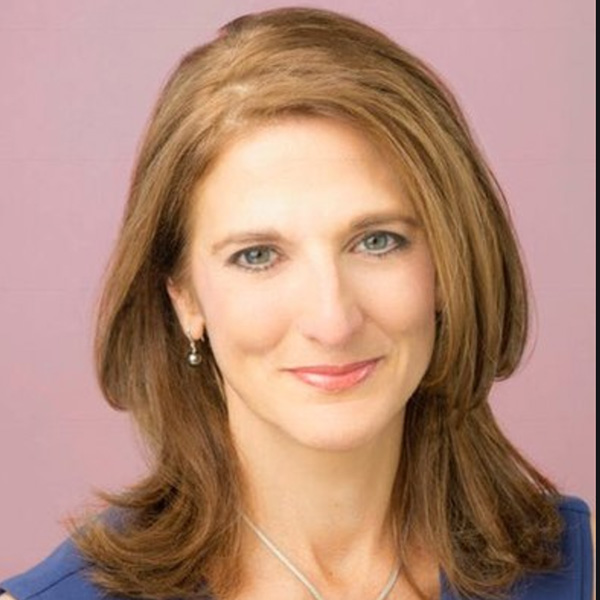
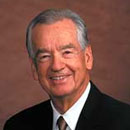
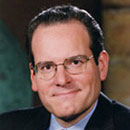
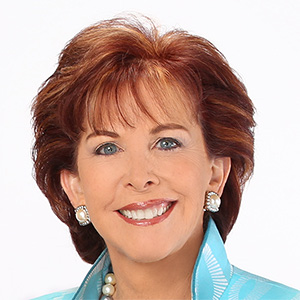
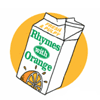
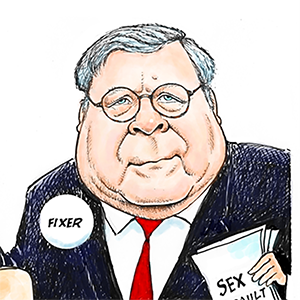




Comments